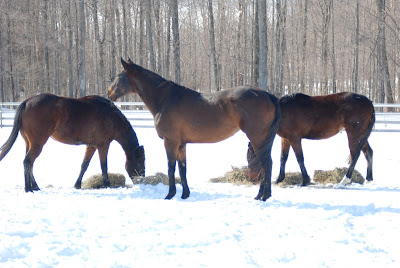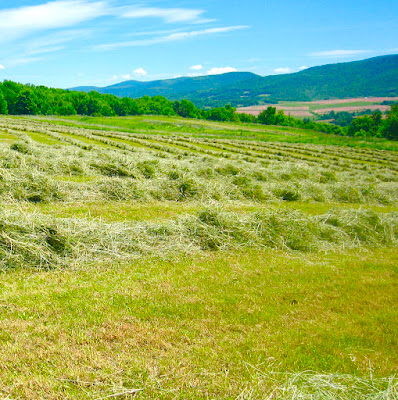If you buy hay from Canada to feed your livestock or in particular, horses, then you certainly know that a substantial price increase is highly likely in the coming months.
Willowview Hill Farm, Stamford NY - Top quality horse hay organically grown and harvested in the Catskill Mountains of NY
Competition for hay sales from the Canadian market has always impacted U.S. farmers. At times of drought or extreme wet weather its import may have saved their bacon, but at most times the imports provide stiff competition for the farmers south of the Canadian border.
It is particularly difficult for farmers in States that are closest to this large production to compete with the imported hay that comes across the border. But it looks set for that to change.
As a New York horse hay farmer, I know keeping an eye on market forces is very important if our small farm is going to survive another year making artisan small square bales for the equine marketplace. There are many influences on hay prices and they are all set to promote higher prices as far as we can ascertain right now.
Mother Nature Can Be Kind Or Cruel
Aside from the imported hay competition, farms face many other rising costs. Not least of which is a 30% rise in insurance costs that has hit us again this year. Thankfully oil prices are lower. But repair costs for equipment are staggeringly high. And costs for fertilizer is even worse. As we farm organically the chemical fertilizer factor doesn't enter into our equation, but that is not true for most hay producers. Almost all round bales contain chemical preservatives too, so their expense will also need to be accounted for in the price.
Like many farmers we fix and mend what we can, but issues like a blown gear box on the discbine or a major tractor repair, can set a farmer back thousands and thousands of dollars, before the first blade of grass is even cut.
Hay equipment is expensive to buy and expensive to maintain
Of course, things don't break when you aren't using them, so we can expect more interruptions to hay production aside from the obvious one that is thrown at us every year by Mother Nature. The weather!
Like many, there is always the consideration to quit farming altogether. The demographic showcases that farmers are aging up and out of the business. It is sincerely hard work. And a roller-coaster experience of fighting with the weather, the machinery and the unknown factors that haunt the bottom line throughout the year can burn out even the most optimistic and hardworking individuals. It is a profession with a high injury factor and health risk too, and medical expenses are also through the barn roof for many.
So all in all I'd say take a good hold of the reins on your hay budget and expect a helluva ride. Because while we are bouncing about in the fields making hay while the sun shines, come Fall the clouds will be gathering as prices likely increase significantly. The only good news for hay farmers is that perhaps without the competition from large Canadian hay producers, they will have a shot at better margins for sales pricing overall to cover their own rising expenses.
When you see hay prices hit new highs, don't be surprised. Forewarned is forearmed. Stock up when you see good hay available on the market and buy the best quality you can to minimize waste. Don't fall prey to making false economies with poor quality horse hay that just brings a vet bill and a lot of mess to clean up come Spring.
 |
| Come winter you'll need to be stocked up |


